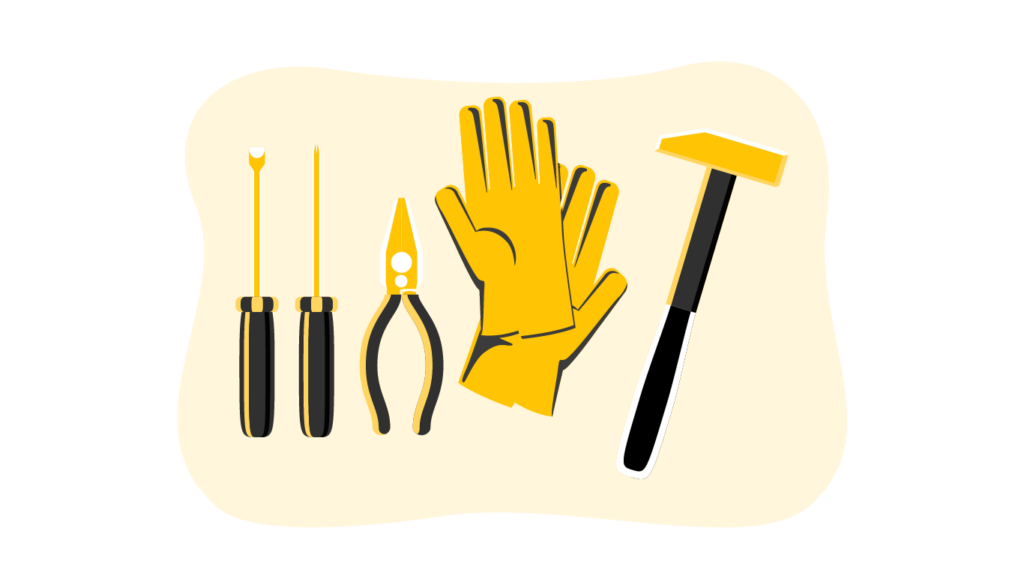Hand Safety Toolbox Talk: Your Guide to Injury Prevention

Your hands are one of your most essential tools, allowing you to do everything from cooking and cleaning to driving and writing. But hand safety is often overlooked, leading to lots of preventable injuries each year.
According to the Industrial Safety and Hygiene News, cuts and lacerations are responsible for approximately 30% of all workplace injuries yearly, with about 12% being exclusive to the hands. Everything from nicks and scrapes to knives and heavy equipment may result in these wounds.
This hand safety guide will discuss the most common hand injuries, how to prevent them, and what to do if they occur.
“Protect your hands…..Use your head.

Why is Hand Safety Important?
Hand injuries can be severe, costly, and even permanent, and they are some of the most common incidents. They often require time off from work to recover. In some cases, they can even lead to permanent damage. The cost for the business can be anywhere between $540 and $26,000, the National Safety Council reports.
OSHA claims that “70 percent of workers don’t wear hand protection, and of those who do, 30 percent don’t wear the right kind of glove for the task.”
This is a big problem because it means that many workers are not only exposed to the dangers of hand injuries but also are not taking the necessary precautions to prevent them.
By providing employees with a safety talk about hand safety, you can help ensure that they are aware of the dangers in the workplace and know how to prevent injuries. This will not only keep employees safe but also help to maintain a productive workforce.
OSHA Regulations for Hand Safety
OSHA has several regulations to help ensure hand safety in the workplace. Some of these regulations include:
- Gloves are essential to hand safety, and OSHA requires that workers use gloves when handling hazardous materials. Gloves protect hands from harmful chemicals, bacteria, and other contaminants. In addition, gloves can protect hands from sharp objects and other potential injuries.
- Training on hand safety is another crucial part of protecting workers’ hands. OSHA requires that employers provide training on the hazards associated with specific tasks and how to perform those tasks safely. This training helps workers understand the risks associated with particular activities and how to protect themselves from potential injuries.
- Employers must also conduct hazard assessments to identify potential hand hazards in the workplace. This is one of the ways to be proactive and prevent hand injuries in the workplace.
With these regulations in place, employers can help create a safe work environment for their employees and help prevent injuries to workers’ hands.
Hand Safety Hazards
Workers’ hands can be exposed to a variety of hazards in the workplace, including:
Chemicals
Many chemicals can cause skin irritation or burns; some can also be harmful if ingested. Employees should always use gloves when handling hazardous materials, and employers should provide training on the hazards associated with specific chemicals.
Bacteria
Bacteria can cause some infections, including hand eczema, impetigo, and cellulitis. Washing the hands is key to preventing the spread of bacteria, and employers should provide hand hygiene facilities.

Sharp Objects
Sharp objects can cause cuts and other injuries to workers’ hands. Employers should provide adequate safety equipment and training to help workers protect themselves from sharp objects.
Potential injuries
The following are some of the common workplace injuries:
- Cuts: Cuts can occur from sharp objects or contact with chemicals. Lacerations can range from minor to severe and can require medical attention.
- Burns: Burns can occur from contact with chemicals or exposure to heat or flames. Whether minor or severe, they often require medical attention.
- Fractures: Fractures can occur from falls or contact with hard surfaces. Fractures can range from minor to severe and can require medical attention.
- Infections: Infections can occur from contact with bacteria or other contaminants. Infections can range from minor to severe and can require medical attention.
Hand Safety Toolbox Talk
What are the greatest dangers to our hand safety on site?
Try using only one or two fingers next time you have a task at home. This may sound silly, but it can help to see how difficult it is to complete tasks with just one or two fingers. After having them for so many years, it’s easy to take our health or abilities for granted.
When working with tools, it’s vital to protect your hands. Here are a few tips to help keep you safe:
- Always wear rubber gloves when handling hazardous chemicals and any piece of equipment.
- Check if the gloves fit properly and are in good condition.
- Avoid using tools that are too large or too small for your hands.
- Be careful when using sharp materials or power tools.
- Watch out for pinch points at rotating parts and similar.
- Seek medical attention if you are injured.
Following these tips can help keep your hands safe while using tools.
Illnesses And Injuries Related to Hand Safety
There are several illnesses and injuries that hand safety issues can cause. One of the most common is carpal tunnel syndrome, which is a condition that results from compression of the median nerve in the wrist.
This can cause pain, tingling, or numbness in the hand and arm. Other possible injuries include cuts, puncture wounds, burns, and muscle strains.
To avoid these types of injuries when working with your hands, ensure you wear the correct protective gear, such as gloves and safety goggles. Be careful when using sharp tools or machinery, and take breaks regularly to stretch and flex your hands. If you do experience any symptoms of injury, seek medical attention right away.
Hand Safety Questions to Employees
- What is carpal tunnel syndrome?
- What are the symptoms of carpal tunnel syndrome?
- What are some measures you can take to prevent carpal tunnel syndrome?
- How do you properly wear gloves to protect your hands?
- When should you use safety goggles?
- What should you do if you experience an injury to your hand?
Promote Hand Safety with this Email Template
Hello,
I hope this email finds you well. I would like to take a moment to promote hand safety in the workplace. Hand safety is often overlooked, but it is a critical aspect of workplace safety.
Here is what you can do to keep your hands safe:
- Wear gloves when working with hazardous materials.
- Know the hazards associated with your tasks, and make sure you understand how to perform those tasks safely.
- Always use Personal Protective Equipment (PPE), such as gloves and safety goggles.
- Regularly inspect your PPE for damage or defects, and replace it when necessary.
- Practice safe handling of all tools and equipment.
I hope these tips will help you promote hand safety in your workplace. Thank you for your dedication to keeping our workers safe!
Video on Hand Safety
Hand Safety Meme
Conclusion
Hand safety is a critical part of any safety program. To help keep your hands safe while working, it is crucial to be aware of the dangers and take precautions to avoid them.
Follow the tips in this article, and ensure you always wear gloves and other protective gear when using tools. If you experience an injury, seek medical attention right away.


